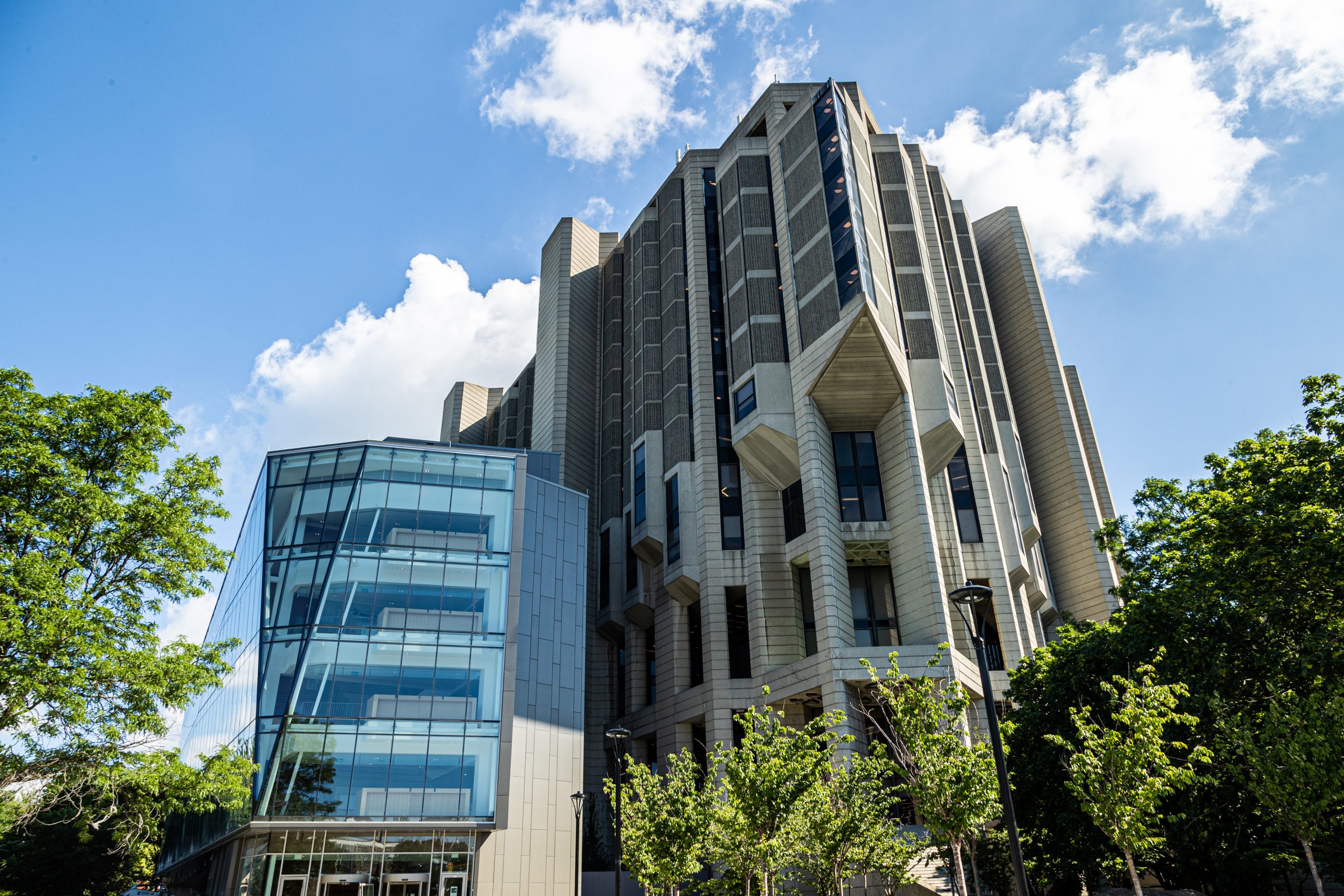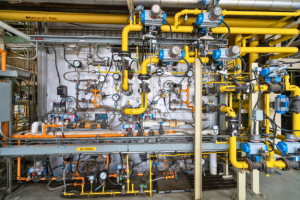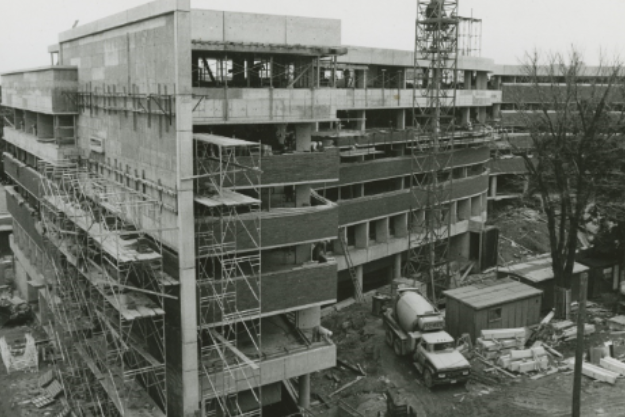A new light on deferred maintenance
Did you know that nearly 100,000 people learn, work, and conduct research on our campus every day?
U of T is a city within a city, and our world-class facilities make that possible; some of the province’s most prestigious architecture and beautiful green spaces are found right here on the St. George campus.


But keeping up with the maintenance and renewal of more than 200 buildings is a major undertaking.
As stewards of our beloved campus, Facilities & Services works hard to ensure that our extensive infrastructure will thrive for generations to come. This means wrestling with some complex challenges—but we think you’ll agree, it’s worth it!
Read on to learn more about the University’s deferred maintenance program in 2023 and what the future holds.
What is deferred maintenance, anyway?


Deferred maintenance is defined as the backlog of major building infrastructure renewals and upgrades that have been postponed to future budget cycles due to a lack of funds.
“When we talk about deferred maintenance, we’re really talking about crucial facility renewals,” says Ron Saporta, Chief Operating Officer, Property Services & Sustainability. “As caretakers of our historic campus, we judiciously manage our deferred maintenance funding. This means thoughtfully and objectively prioritizing needs, establishing mechanisms for responsible project delivery, and addressing deferred maintenance through our large-scale energy and capital projects.” Managing the deferred maintenance backlog strategically is critical, Saporta continues, because minor issues can escalate into major problems if left unaddressed.
To keep things on track, F&S uses a robust, data-driven methodology to assign risk scores to building systems and to prioritize based on the highest need.
We also retain a rainy-day emergency fund to take care of issues that can—and do—crop up unexpectedly.
We have an incoming wave of renewals
In the twentieth century, U of T saw two major surges of construction.


The first of these took place in the 1960s, when the postwar economic boom led to an explosion of expansion. Student enrolment more than doubled from 1958 to 1970, while staff population increased threefold. Meanwhile, the University’s operating budget increased by over 630%!
During these decades, we broke ground on more than twenty new buildings, including some of the University’s most noteworthy: Robarts Library, the Medical Sciences Building, and New College.
Thirty years later, the University grew again—this time driven by programmatic expansion. Between 2000 and 2005, eight buildings opened their doors on the St. George campus, including the Bahen Centre for Information Technology, the Leslie L. Dan Pharmacy Building, and the Terrence Donnelly Centre for Cellular & Biomolecular Research.
Decades on from the two construction booms, the building systems that support these iconic spaces are rapidly approaching obsolescence—simultaneously!
This will continue to grow our deferred maintenance backlog in the coming years.
We have a robust, data-driven process
Every year, a specialist firm audits the condition of 20% of the buildings on campus, looking for things like age, condition, and possible non-complicance with current codes and standards. This helps us identify the remaining useful life of our properties, as well as the estimated cost to renew them and the recommended year we should do so. Each building on campus is audited at least once every five years.
Building systems are then assigned risk scores based on these data; the highest-risk building systems inform the following year’s deferred maintenance projects in alignment with the budget.
Our backlog is increasing
In 2023, the total tri-campus deferred maintenance backlog grew from $961M to $1.2B—that’s a 23% increase! We know that the cost of fully replacing all University buildings has increased by $700 million since 2022; this brings the total cost to a stunning $6.6 billion.
There are lots of factors in play here, but chief among them is consistently high rates of inflation. Our purchasing power is ever diminishing thanks to rising construction costs across the sector; in Toronto, inflation for non-residential construction projects was as high as 17.5% in 2023! This represents the fastest increase to the city’s non-residential construction price index in the last forty years.
Furthermore, the incoming wave of simultaneous renewals means that every increase to the backlog is problematic.
We’re more organized than ever before
We use the deferred maintenance budget to complete projects in a timely way according to a robust methodology. This is critical to preventing asset failure, remaining on budget, and minimizing disruption to campus operations.
The timeliness of this work is especially important in a global supply market where construction material lead times remain 62% higher than they were in early 2020.
As a result, in 2023, we formed a single central team—consolidating responsibilities previously diffused across many roles—dedicated to delivering consistent, high-quality deferred maintenance projects on time and on budget on the St. George campus.
“We’ve built a highly focused and efficient delivery team with different skills to match the various types of projects thrown our way,” says Flavio Bertolo, director, infrastructure planning and implementation. “We need to be nimble and adaptable to keep up with the current challenges facing our campus. I’m very proud of the professionals we’ve assembled to keep this essential work on track.”


The team has instituted a governance framework, relying on a trained staff of experienced project managers to serve as central points of contact and delivery. By using a structured and consistent approach when procuring and managing projects, we have also begun to accelerate delivery and reduce costs by testing new, optimized procurement strategies.
–
